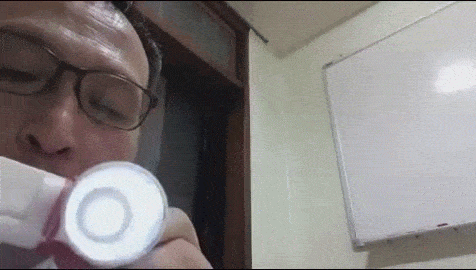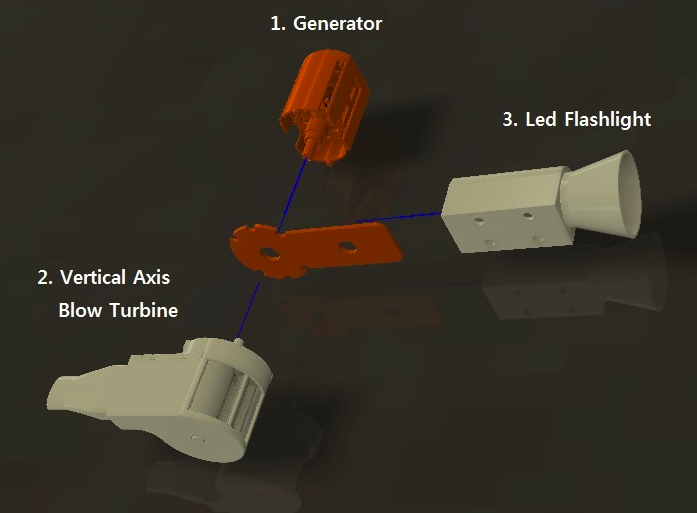 Don’t you just hate it when the power goes out in your house, you race to the closet to grab your handy-dandy flashlight, go to turn it on but discover that the batteries have completely died? This has happened to me on more than one occasion, and surely I’m not the only one to fall victim to the infamous powerless flashlight.
Don’t you just hate it when the power goes out in your house, you race to the closet to grab your handy-dandy flashlight, go to turn it on but discover that the batteries have completely died? This has happened to me on more than one occasion, and surely I’m not the only one to fall victim to the infamous powerless flashlight.
When MakerBot launched their “Catch The Wind Challenge” back in June, they had hoped to encourage engineers and designers from around the world to come up with some unique 3D printed creations that would “harness the power of the wind”. When one South Korean man, named Tim Cho heard of the challenge, he began thinking about how he could modify a flashlight design he had been working on, in order to qualify to win the First Place prize of a MakerBot Replicator 3D Printer.
“I was designing and printing a hand-winding crank LED Flashlight like Dynamo,” Cho tells 3DPrint.com. “I wanted to create something for the #CatchTheWind Thingiverse Challenge, but there were already many wind-powered flashlights. So I thought I could use ‘blow power’ instead of wind power, kind of like a whistle.”
So Cho began modeling the 3D printed components for his unique flashlight using Autodesk Inventor. He created 15 individual 3D printable parts which each took approximately 30 minutes to print out at a layer height of 0.2mm and an infill density of 25%. After spending about 7:30 hours printing out all of the parts, he then assembled them, along with some additional electronic components which included: coils, magnets, a bridge rectifier, an LED, some wires, and more.
As for how this battery-less flashlight works, Cho explains:
“When you strongly blow in through the mouthpiece, the vertical axis turbine and the magnets of the generator are rotating together. The shafts of the turbine and generator are directly connected. Then the coils of the generator makes AC (alternating current). The bridge rectifier circuit converts an AC input to a DC output. By blowing, the voltage generated creates about DC 0.5~1 volts. To light up an LED though, you need about DC 3 volts. For boosting voltage, I used a Joule thief circuit.”
Cho, who is currently unemployed, says that he is still learning about what his 3D printer can and can not do, and has been running into a lot of bumps along the way. If there is one downside to using this flashlight, he says that it is the fact that after a while, you get a little lightheaded from blowing so much. Currently the design files for this unique flashlight can be downloaded for free from Thingiverse. Check out the video of the flashlight in action below.
Subscribe to Our Email Newsletter
Stay up-to-date on all the latest news from the 3D printing industry and receive information and offers from third party vendors.
You May Also Like
Air Force Awards Fortius Metals $1.25M to Qualify 3D Printing Wire for Hypersonic Applications
AFWERX, part of the US Air Force Research Laboratory (AFRL), awarded a Direct-to-Phase II Small Business Innovation Research (SBIR) contract worth $1.25 million to Colorado’s Fortius Metals, to accelerate qualification...
US Air Force Awards JuggerBot $4M for Large-format Hybrid 3D Printing
Large-format 3D printer manufacturer JuggerBot has received a $4 million grant to develop a large format 3D printer, courtesy of the Under Secretary of Defense, Research and Engineering Manufacturing Technology...
Where Have All AM’s Unicorns Gone?
In the rapidly evolving world of 3D printing, startups valued at over a billion dollars, known as unicorns, once seemed as fantastical as the mythical creatures themselves. While a few...
How My Childhood Fascination with Planes Led to Investing in 3D Printing
My fascination with aerospace started young, and I started studying planes–identifying them in the sky and learning everything I could about how they work. Fast forward to my first week...


































